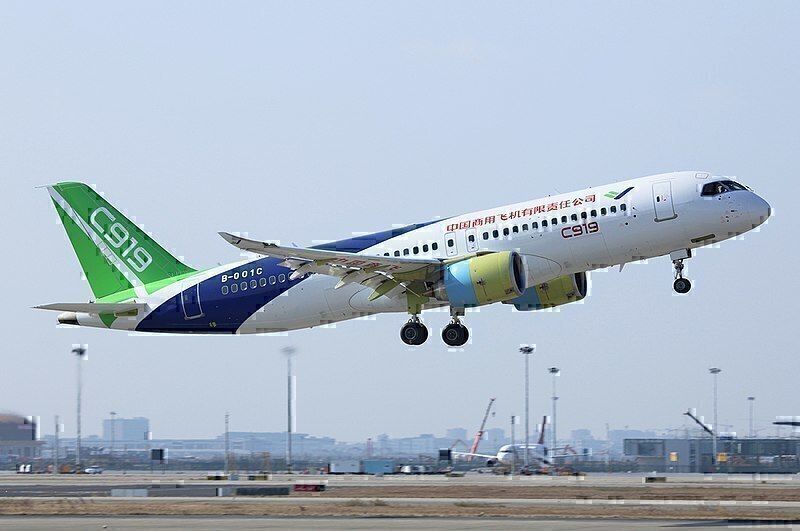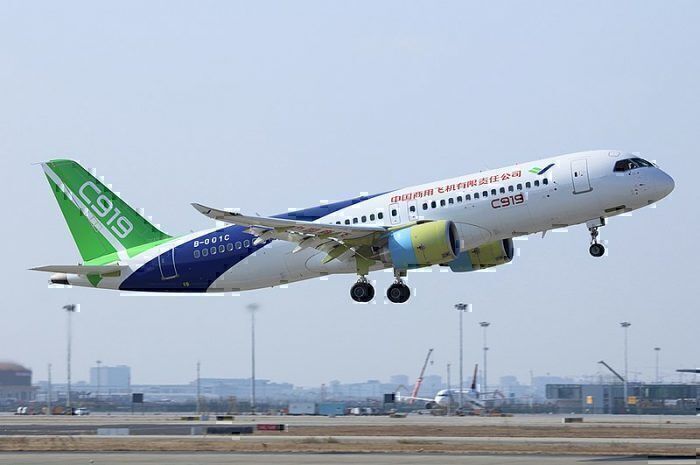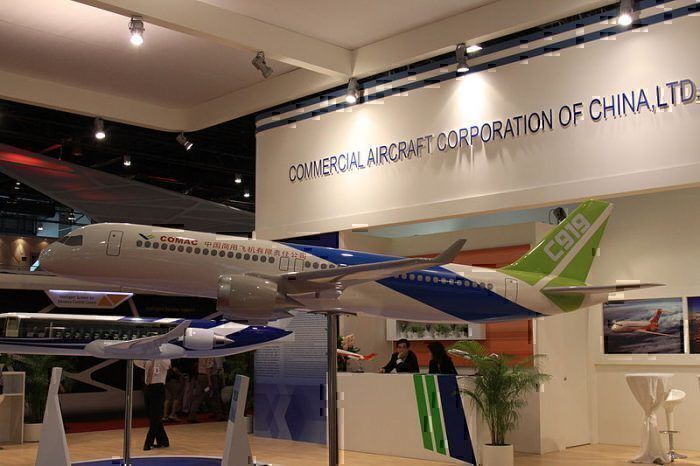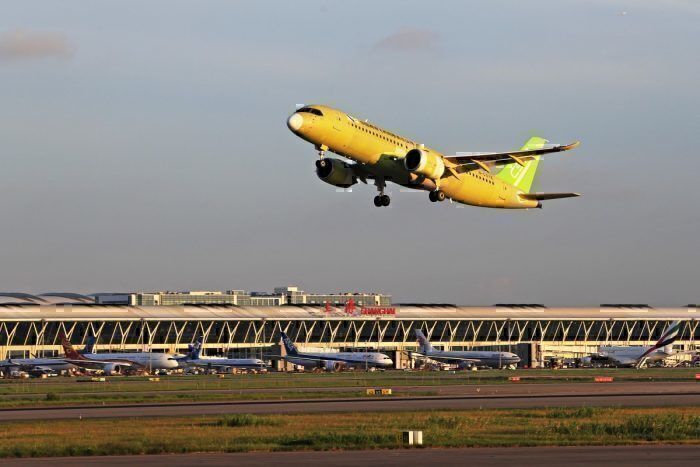China’s attempt to compete with Airbus and Boeing in the single-aisle twin-engine airliner market has suffered another blow after COMAC engineers miscalculated load factors. Four people familiar with the development of the plane told Reuters that Chinese engineers sent the wrong mathematical data to the engine manufacturer CFM International.
Now according to inside sources, the engines and their housings may need to be reinforced at COMAC’s expense.
The C919s progress is well behind schedule
Already at least five years behind schedule, the state-owned Commercial Aircraft Corporation (COMAC) is struggling with a series of technical issues that are delaying test flights.
While delays almost always happen in complex aircraft development programs, the inability to move the C919s progress is being seen as a potential embarrassment for China.
Designed to seat up to 168 passengers, the C919 already has orders from 20 customers. While the price tag of the jet has still not been released, it is thought to be around 30% less than the price of an Airbus A320neo or a Boeing 737 MAX.
The trouble China will have in selling the aircraft will come down to an assumption that Chinese made products are inferior to their western counterparts.
All the technical glitches and delays with flight testing mean that COMAC has completed only 20% of the time the aircraft needs in the air to get final approval from the Chinese Civil Aviation Administration (CAAC).
COMAC and CFM International refused to comment
When speaking to the Chinese state media late last year, a representative of COMAC, Ying Yang said he expected the C919 to be certified in two to three years. Prior to this, the planemaker had set the end of 2020 for certification with the first deliveries in 2021.
When Reuters contacted both COMAC and CFM International for comment, neither responded with information regarding the aircraft's development.
From what Reuters understands, COMAC has still not sent the correct calculations to General Electric and Safran. This is despite the engine maker needing the information to ensure that the engines can handle heavy loads.
One of Reuters' sources told the international news organization that, “things do not always work out as planned, but I hope COMAC would slow down a bit and try not to rush things, otherwise there will be tons of issues later on.”
Even though China has been sending people into space for nearly 20 years, the engine miscalculation illustrates COMAC’s lack of experience in building commercial aircraft.
As well as the engine problems, COMAC has also come across cracks in the horizontal stabilizers of some of the first few aircraft they built. There have also been gearbox problems that have forced the engines to shut down during test flights along with inspections that have discovered cracks and leaking oil.
The gearbox issues are related to unexpected vibrations that have added to the timeframe problems and could prove costly to resolve.
All of this is coming at a time when industry forecasters are predicting a slowdown in the demand for new aircraft due to geopolitical tensions.
The Chinese had made the C919 a pivotal part of its ‘Made in China 2025’ initiative to help the nation become more self-sufficient.
China can force its own airlines to buy the C919
Looking at it realistically, the C919 will be a success despite all its teething problems. This is because the communist Chinese government can force its own airlines to purchase the aircraft, rather than Airbus or Boeing models.
Chief analyst of DCA Chine-Analyse Jean-François Dufour agrees when he says:
“The C919’s real mission is to conquer a domestic market dominated by its two foreign competitors. Ten to 15 years from now, a next-generation C919, or other models developed by COMAC, may become real competitors on the global scene.”
The C919 is still a work in progress, but it will be nice to have another competitor to the big two offering a reasonably priced 100 plus seat aircraft.
Would you be worried about flying on a Chinese built C919, or do you think once the engineers sort out all the issues it will be as safe as any other aircraft in the sky?
Please let us know in the comments.




